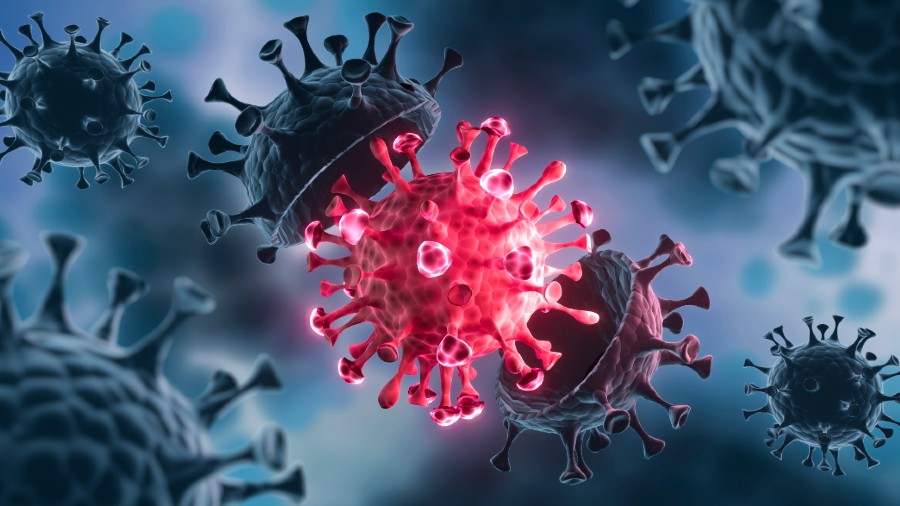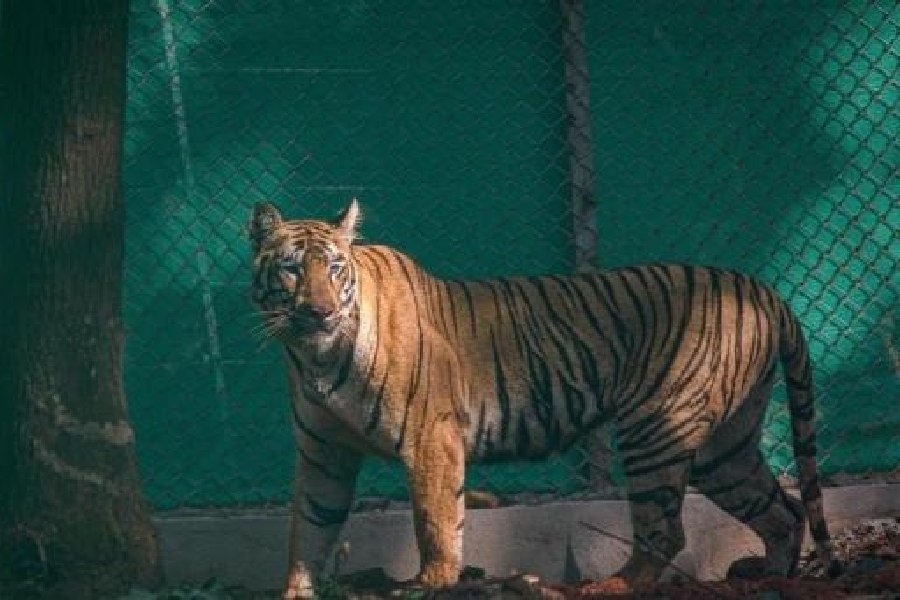The Union Health Ministry on Wednesday expressed its displeasure against terming the B.1.617 mutant of the novel coronavirus as an "Indian variant", saying that the WHO had not used the word "Indian" for this strain in its document.
The ministry dismissed as "without any basis and unfounded" media reports that have used the term "Indian variant" for the B.1.617 mutant strain, which the WHO earlier said was a “variant of concern”.
On Tuesday, a WHO report said the variant had “increased transmissibility” and had been found in 44 countries, and therefore described it as a "variant of global concern".
"Several media reports have covered the news of the World Health Organisation (WHO) classifying B.1.617 as a variant of global concern. Some of these reports have termed the B.1.617 variant of the coronavirus as an 'Indian Variant'," the ministry said in a statement.
"These media reports are without any basis, and unfounded," it said, adding that the WHO had not associated the term "Indian Variant" with the B.1.617 strain of the coronavirus in its 32-page document.
The WHO also issued a clarification saying that it does not associate variants with the names of countries they were first reported from.
"WHO does not identify viruses or variants with names of countries they are first reported from. We refer to them by their scientific names and request all to do the same for consistency," the tweet from the global health organisation said.
In a report published on Tuesday, the WHO said that the B.1.617 variant of SARS-CoV-2 - the virus that causes the Covid-19 disease - was first found in India in October 2020. The variant, it added, had “increased transmissibility” and has been found in 44 countries.
"As such, we are classifying this as a variant of concern at the global level," she said. Until now, WHO has listed it as a "variant of interest".
The list of variants of concerns already includes virus mutations first reported from Britain, Brazil and South Africa.
Routine assessment
The UN body routinely assesses if variants of SARS-CoV-2 result in changes in transmissibility and severity, or if they lead to changes in public health and social measures' implementation by national health authorities.
As of May 11, over 4,500 sequences have been uploaded to GISAID and assigned to B.1.617 from 44 countries in all six WHO regions, the global health body said in its latest weekly epidemiological update published on Tuesday.
GISAID is a global science initiative and primary source that provides open access to genomic data of the novel coronavirus responsible for the COVID-19 pandemic.
WHO has also characterized the lineage B.1.617 as a “variant of concern (VOC)”, which means it is more dangerous than the original form of the virus first seen in China in late 2019.
That danger stems from a variant's higher transmissibility, lethality and resistance to vaccines, or either of them.
Higher rates of transmission
B.1.617 contains three sub-lineages, which differ by few but potentially relevant mutations in the spike protein - this helps the virus enter the human cells, as well as the prevalence of detection globally.
At the present time, WHO has designated B.1.617 as a VOC based on early evidence of phenotypic impacts compared to other circulating virus variants, WHO said.
According to it, B.1.617 sub-lineages appear to have higher rates of transmission, including observed rapid increases in prevalence in multiple countries.
Preliminary evidence suggests potential reduced effectiveness of Bamlanivimab, a monoclonal antibody used for COVID-19 treatment, and potentially slightly reduced susceptibility to neutralisation antibodies, it said.
First reported from India
Viruses in the B.1.617 lineage were first reported in India in October 2020.
The resurgence in COVID-19 cases and deaths in India have raised questions on the potential role of B.1.617 and other variants such as B.1.1.7 in circulation.
A mutation means a change in a nucleic acid base or amino acid molecule, and a virus containing this change is termed a mutant.
Mutations eventually accumulate to generate variants that differ from the original virus more and more, and so, a variant can have limited or even cumulative mutations.
Mass gatherings blamed
A recent risk assessment of the situation in India conducted by WHO found that resurgence and acceleration of COVID-19 transmission in India had several potential contributing factors.
These include an increase in the proportion of cases of SARS-CoV-2 variants with potentially increased transmissibility, several religious and political mass gathering events which increased social mixing, reduced adherence to public health and social measures.
The exact contributions of each of these factors on increased transmission in India are not well understood.
Approximately 0.1 per cent of positive samples in India have been sequenced and uploaded to GISAID to identify SARS-CoV-2 variants.
The prevalence of several VOCs, including the B.1.1.7 and B.1.612 sub-lineages, increased concurrent to the surge in COVID-19 cases reported in India, according to WHO.
While B.1.1.7 and B.1.612.1 variants have begun to wane in recent weeks, a marked increase in the proportion of viruses sequenced as B.1.612.2 has been observed over the same period, it said.
Since the identification of these variants through late April 2021, B.1.617.1 and B.1.617.2 accounted for 21 per cent and 7 per cent of sequenced samples from India, respectively.
A preliminary analysis conducted by WHO using sequences submitted to GISAID suggests that B.1.617.1 and B.1.617.2 have a substantially higher growth rate than other circulating variants in India, suggesting potential increased transmissibility.











